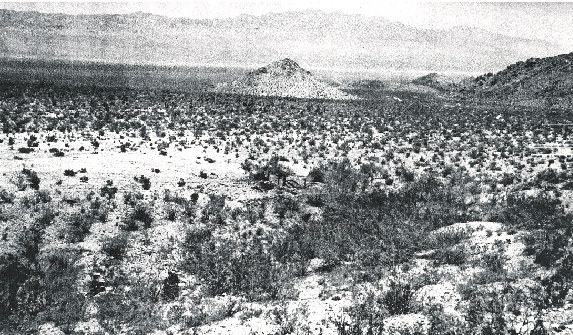Especially for the eastbound traveler, Marl Springs was a welcome sight. In 1852, John Brown later the ferry owner at Fort Mojave, found the springs a life saver. When his party had become exhausted in the blowing sand dunes of the playground,' Brown had struck out ahead for Marl Springs. The peaks of the Old Dad Mountains showed him the way out of the windswept bowl, then he marked his desperate route between the bare, rocky wastes of the Kelso Marl Mountains, on his right, and rolling lava hills on his left.
A year later, rumors of Indian depredations again were heard. The Mojave commander received a letter from a civil officer "stating that four horses and a bullock had been killed and eaten by Indians at Marl Springs." But this was a false alarm; two days later the official reported that the stock had been found, neither killed nor eaten.


| B | Barracks |
| HQ | Headquarters |
| ST | Stable |